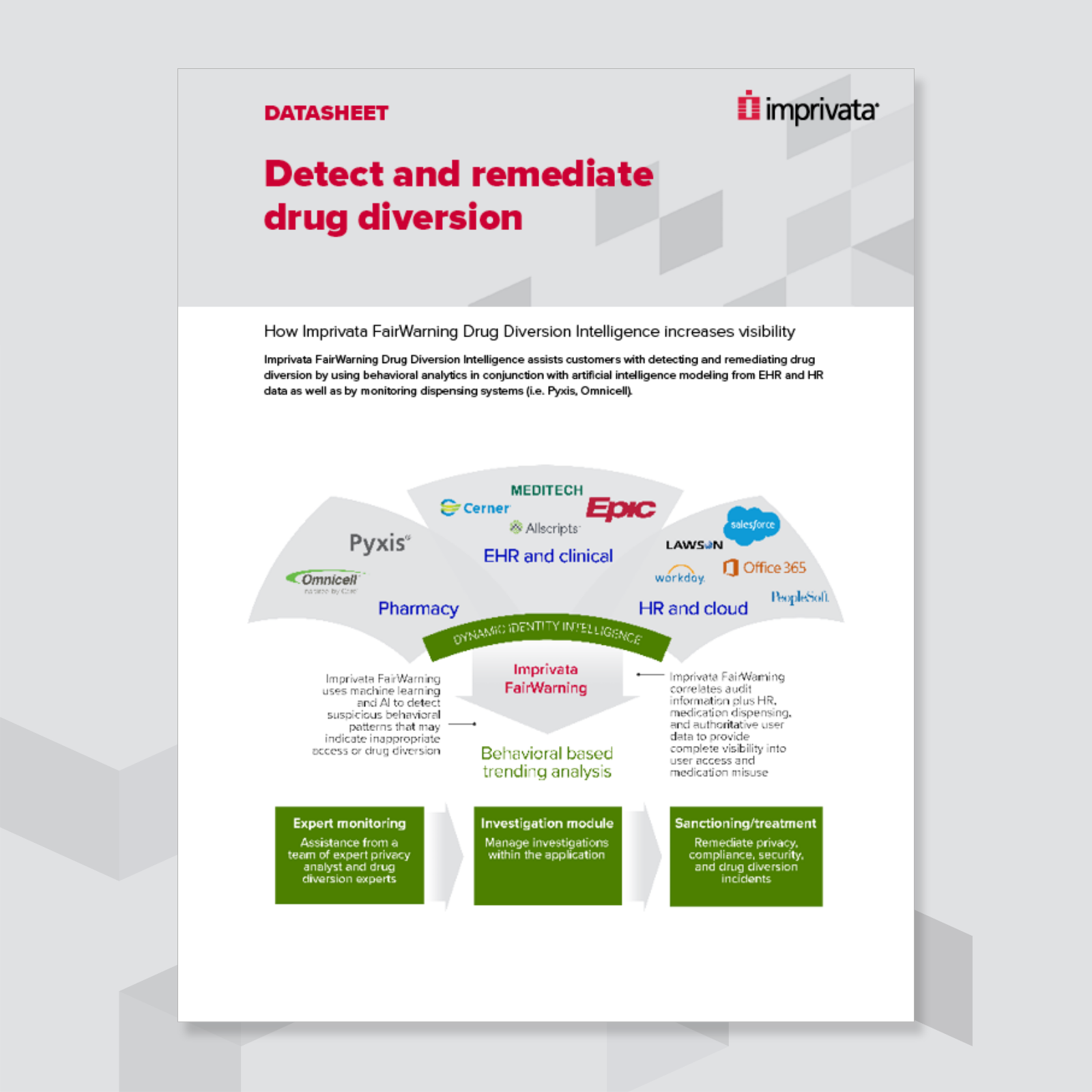What is drug diversion? A look at the problem, and what happens if you don’t prevent it.
Left unchecked, the devastating toll taken by drug diversion runs wide and deep.
Like the addictions that often drive them, drug diversions inflict a devastating, widespread toll. These actions represent a severe breach of security, privacy, and protocols for health delivery organizations. And just as importantly, they cultivate a breach of trust with patients – disrupting the most fundamental element of the healthcare relationship. Here’s some information that provides perspective on the issue, including its significant impact on healthcare organizations and those they care for.
What is drug diversion?
Drug diversion can be defined as any act or deviation that removes a prescription drug from its intended path between the manufacturer to the patient.
The diversion can be conducted by healthcare workers at all levels, from clinical staff, to EMTs, to nurses, and facility staff. Easy access to large volumes of highly addictive prescription drugs has made these workers vulnerable and motivated to act. And it’s led to a variety of creative diversion methods that have been increasingly difficult to detect.
The actions of drug diverters play a significant role in contributing to the nation’s abuse of prescription drugs, especially opioids and other controlled substances. In fact, drug diversion statistics show that some 37,000 diversions occur in the U.S. each year, a troubling impact felt across the healthcare system. It’s a problem that’s clearly on the radar for healthcare executives: 96% agree that drug diversion is occurring in hospitals across the country.
Inadequate resources and response
While the issue is significant and clearly front and center for healthcare executives, combating it has been a tremendous challenge. For instance:
- 73% agree that most drug diversion goes undetected
- 95% of drug diversion cases are not being investigated
Why has drug diversion prevention been so difficult? Not surprisingly, budget constraints and competing resource needs have played a major role in handcuffing organizations. As a point of reference, 38% of surveyed healthcare executives said that resources for recognizing and preventing drug diversion were reallocated due to budget cuts caused by the pandemic.
What also comes into play is the ineffectiveness of traditional approaches for how to prevent drug diversion in hospitals. Reliance on manual approaches for recognizing and preventing drug diversion has often resulted in a case of too little, too late. Typically driven by tips and observations, the effectiveness of these efforts has been spotty, and detection often happens too long after the fact to make a beneficial impact.
The effects of drug diversion on patients
The negative impact on patient care and safety has been deep and multi-faceted. When drugs are diverted, patients may be delayed access to pain relief. And diversions can leave patients exposed to bloodborne pathogens caused by exposure to contaminated materials. In addition, care can be compromised by the falsification of medical records. Perspective from healthcare executives reinforces the severity of these issues:
- 100% said that employee drug diversion negatively impacts quality of care
- 96% noted that drug diversion has an adverse impact on patient safety
In turn, these alarming effects result in a harder-to-measure but equally troubling problem: the erosion of patient trust. Collectively, the negative impacts of drug diversion can cause a very difficult to repair breakdown of trust between patients and care providers.
And the damage doesn’t stop there. Diversion creates a damaging ripple effect, extending well beyond the impact on patient care and trust. Interrelated business and care-critical challenges can include:
- The financial impact of diverted prescription drugs
- Regulatory compliance concerns
- Data breach issues
- Negative publicity
It’s a big problem that’s not going away, and no healthcare organizations are immune. Awareness of its devastating effects and the creation of a strategic game plan to combat it can make a significant difference. And a drug diversion intelligence program, which helps to spot diversion and anomalous behaviors, can help you do just that.
Learn more about what makes an effective drug diversion detection and prevention strategy.

